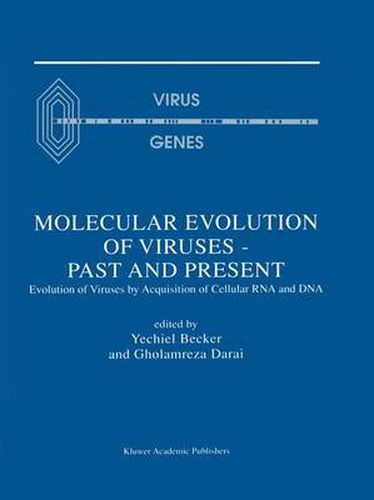Readings Newsletter
Become a Readings Member to make your shopping experience even easier.
Sign in or sign up for free!
You’re not far away from qualifying for FREE standard shipping within Australia
You’ve qualified for FREE standard shipping within Australia
The cart is loading…






second gene is the endoplasmic reticulum (ER)- elements (SINEs). The repetitive DNA sequences in resident heat shock protein GRP78, a member of the eukaryotic genomes are thought to reflect the Bip family. The identification of an ER resident evolutionary forces acting on selfish DNA (10). It GRP78 protein in G. lamblia, a primitive eukaryotic may be possible to suggest that the Archeabacterial archazoan that lacks mitochondria and other retrons (6) further evolved, by recruiting essential organelles, strongly suggests the existence of ER in cellular genes, into RNA and DNA viruses. this ancient eukaryote. Phylogenetic analyzes of In a recent review on mitochondrial evolution (21) HSP70 sequences showed that the cytoplasmic and Gray et al. indicated that gene sequence data suggest ER homolog form distinct subfamilies that evolved that the mitochondrion arose in a common ancestor from a common eukaryotic ancestor by gene of all extant eukaryotes raising the possibility that this duplication that occurred very early in the evolution organelle originated at essentially the same time as the of eukaryotic cells (18). In a more detailed analysis nuclear component of the eukaryotic cell .
$9.00 standard shipping within Australia
FREE standard shipping within Australia for orders over $100.00
Express & International shipping calculated at checkout
second gene is the endoplasmic reticulum (ER)- elements (SINEs). The repetitive DNA sequences in resident heat shock protein GRP78, a member of the eukaryotic genomes are thought to reflect the Bip family. The identification of an ER resident evolutionary forces acting on selfish DNA (10). It GRP78 protein in G. lamblia, a primitive eukaryotic may be possible to suggest that the Archeabacterial archazoan that lacks mitochondria and other retrons (6) further evolved, by recruiting essential organelles, strongly suggests the existence of ER in cellular genes, into RNA and DNA viruses. this ancient eukaryote. Phylogenetic analyzes of In a recent review on mitochondrial evolution (21) HSP70 sequences showed that the cytoplasmic and Gray et al. indicated that gene sequence data suggest ER homolog form distinct subfamilies that evolved that the mitochondrion arose in a common ancestor from a common eukaryotic ancestor by gene of all extant eukaryotes raising the possibility that this duplication that occurred very early in the evolution organelle originated at essentially the same time as the of eukaryotic cells (18). In a more detailed analysis nuclear component of the eukaryotic cell .